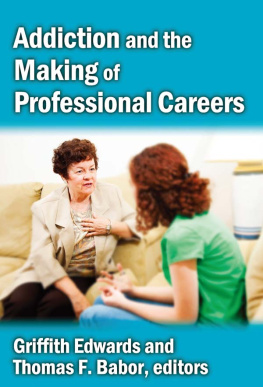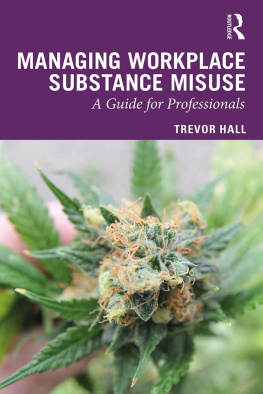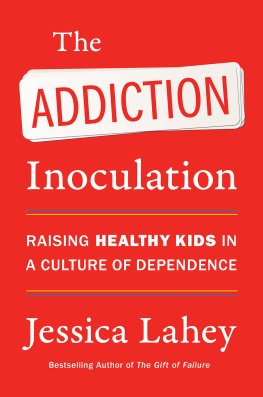a- z of substance misuse and drug addiction
professional keywords
Every field of practice has its own methods, terminology, conceptual debates and landmark publications. The Professional Keywords series expertly structures this material into easy-reference A to Z format. Focusing on the ideas and themes that shape the field, and informed by the latest research, these books are designed both to guide the student reader and to refresh practitioners thinking and understanding.
Available now
Mark Doel and Timothy B. Kelly: AZ of Groups & Groupwork
Jon Glasby and Helen Dickinson: AZ of Inter-agency Working
Richard Hugman: AZ of Professional Ethics
Glenn Laverack: AZ of Health Promotion
Neil McKeganey: AZ of Addiction and Substance Misuse
Steve Nolan and Margaret Holloway: AZ of Spirituality
Marian Roberts: AZ of Mediation
Available soon
Jane Dalrymple: AZ of Advocacy
David Shemmings, Yvonne Shemmings and David Wilkins: AZ of Attachment Theory
Jeffrey Longhofer: AZ of Psychodynamic Practice
David Garnett: AZ of Housing
Fiona Timmins: AZ of Reflective Practice
a- z of
substance misuse & drug addiction
Neil McKeganey
Neil McKeganey 2014
All rights reserved. No reproduction, copy or transmission of this
publication may be made without written permission.
No portion of this publication may be reproduced, copied or transmitted save with written permission or in accordance with the provisions of the Copyright, Designs and Patents Act 1988, or under the terms of any licence permitting limited copying issued by the Copyright Licensing Agency, Saffron House, 6-10 Kirby Street, London EC1N 8TS.
Any person who does any unauthorized act in relation to this publication may be liable to criminal prosecution and civil claims for damages.
The author has asserted his right to be identified as the author of this work in accordance with the Copyright, Designs and Patents Act 1988.
First published 2014 by
PALGRAVE MACMILLAN
Palgrave Macmillan in the UK is an imprint of Macmillan Publishers Limited, registered in England, company number 785998, of Houndmills, Basingstoke, Hampshire RG21 6XS.
Palgrave Macmillan in the US is a division of St Martins Press LLC,
175 Fifth Avenue, New York, NY 10010.
Palgrave Macmillan is the global academic imprint of the above companies and has companies and representatives throughout the world.
Palgrave and Macmillan are registered trademarks in the United States, the United Kingdom, Europe and other countries
ISBN: 9780230314207
This book is printed on paper suitable for recycling and made from fully managed and sustained forest sources. Logging, pulping and manufacturing processes are expected to conform to the environmental regulations of the country of origin.
A catalogue record for this book is available from the British Library.
A catalog record for this book is available from the Library of Congress.
Printed in China
To Marina When it rained you made the sun shine
contents
acknowledgements
I am grateful to Catherine Gray at Palgrave Macmillan for raising the possibility of writing an A to Z of substance misuse. I agreed with unbridled enthusiasm though without realizing the journey that I would then embark upon in covering the various topics that needed to be reviewed. Writing any book involves stealing time from other commitments and other people. I am grateful to my current and former colleagues within the Centre for Drug Misuse Research: Marina Barnard, Carole Bain, Chris Russell, Joe McGallagly, Uday Mukherji, Jim McIntosh, and Mick Bloor. I would like to thank Sarah Cunningham-Burley of Edinburgh University for arranging my access to the University Library without which it would not have been possible to compile this A to Z. Finally, I would like to thank my children: Rebecca, Gabriel and Daniella and my grandchildren: Elise and Leo.
how to use this book
In writing this A to Z, I have tried to cover the breadth of territory that the use and abuse of various substances encompasses, with a view to introducing the student or general reader to a range of new concepts and debates. There is something of a silo approach to so much of the work going on in the field of addictions research. The person whose engagement in the drugs field has to do with drug treatment may barely think about the dynamics of drug markets or drugs enforcement. Similarly, the person whose interest lies principally in the field of criminology may pay scant attention to the challenges of addictions treatment. I hope that this book will break down some of these divides and thereby offer a helpful starting-point and guide.
In terms of my selection criteria, I have largely avoided including entries for the multiplicity of drugs that are now available. The production of new substances is occurring at such a pace that any listing would be out of date by the time this book found its way through production. There are also a number of highly regarded public sources of drugs information, some of them online, such as Talk to Frank (http://www.talktofrank.com/). This said, I have included entries for some substances that remain long-standing problems and which I feel warrant discussion as professional keywords.
My aim with this book is to bring a sensitivity to the discussion that is borne of many years working in the field of addictions. The entries that I have included cover a range of terminology and include a variety of drug-related issues, and strategies for dealing with them, whether at a policy or individual treatment level. The entries vary in length - some being limited to a few paragraphs and others more akin to a short essay. In each, I have tried to convey something of the liveliness of the debates that run through our field and the research evidence that supports different knowledge claims. I have included a small number of references to recent work at the end of each entry, which can be followed up by those with an interest in a specific line of argument. I have also sought to show the inter-connectness of many of the terms and concepts in the field by highlighting my chosen keywords in italics in the text, as well as signposting related topics at the start of each entry.
Unavoidably this compilation has a personal element to it, both in the entries I have selected and the materials I have reviewed. However, I have sought to go beyond my own personal views and prejudices in trying to give a flavour of the issues that characterise our field. In compiling this book I was asked to work to a limit or around 70,000 words and at the time I thought that was more than generous. I realise now that I could easily have doubled or trebled that word limit and still there would have been omissions or debates dealt with only superficially. Such is the richness and breadth of this diverse and contested field, which I hope this book will help you to appreciate and explore.










